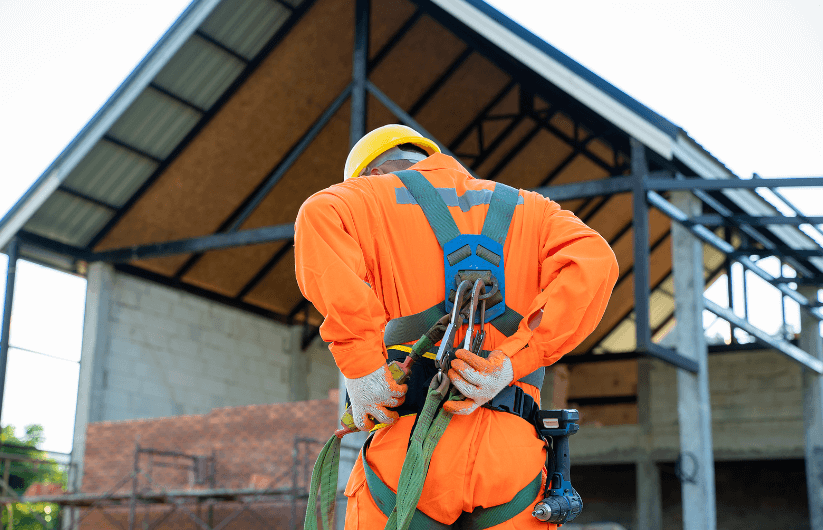The use of safety belts in scissor lifts: an important safety measure
Introduction
Scissor lifts are vital equipment used in a wide range of industries to perform tasks requiring access to elevated work areas. These versatile machines offer convenience and efficiency, but their safe operation is critical. A recurring question in the realm of scissor lift safety is whether or not a seat belt is required. In this comprehensive article, we will explore the importance of seat belts in scissor lift operations and their role in ensuring worker safety. In addition, we’ll highlight CFMG, a leading elevator manufacturer based in northern China that has made security a cornerstone of its business philosophy.
Understanding Scissor Lifts
Before we delve into the details of seatbelt use, it’s necessary to have a basic understanding of scissor aerial lifts. Scissor lifts are aerial work platforms that provide vertical access to elevated work areas. Attached steel supports form their characteristic “X” shape, hence the name. Scissor lifts come in various sizes and configurations, allowing them to be adapted to multiple applications.
Common uses for scissor lifts include:
Construction: scissor lifts are essential on construction sites for installing fixtures, painting, and performing structural maintenance.
Maintenance and facilities management: Maintenance crews often rely on scissor lifts to replace light fixtures, HVAC system repairs, and ceiling repairs.
Warehousing: In warehouse operations, scissor lifts help access high racks and for inventory management.
Entertainment: Scissor lifts are often used in the entertainment industry to set up lighting and camera equipment for movie and stage productions.
Safety First: A Priority for Scissor Lifts
Safety is always a top priority when using scissor lifts. These machines involve working at height and, as such, pose inherent risks that must be mitigated through safety measures and best practices. Several vital aspects must be considered to ensure the safety of scissor lift operations:
Operator training: Adequate training is essential for anyone operating a scissor lift. Operators must be well-versed in the elevator’s controls, stability requirements, and safety protocols.
Regular Maintenance: Routine maintenance and inspection of the scissor lift is critical to ensure it is in proper working order. Equipment failure can lead to accidents.
Fall Protection: Falls from elevated work platforms are a significant safety concern. Fall protection measures, including safety belts, are critical to preventing accidents.
Safety belts in scissor-type aerial work platforms: a necessity?
The fundamental question at this discussion’s heart is whether safety belts are required on scissor-type aerial work platforms. In most cases, the answer is yes. Using seat belts in scissor lift operations is not only recommended but, in many cases, legally mandatory. Below are critical considerations regarding the use of safety belts in scissor lifts:
Regulations and guidelines: Occupational safety regulations and policies vary from jurisdiction to jurisdiction but typically require fall protection equipment, such as safety belts when working at specific heights. These regulations are in place to protect workers.
Risk assessment: A thorough assessment of the work environment and tasks should be carried out before using a scissor lift. Using a safety harness is a prudent option if there is a potential risk of falling from the elevator.
Manufacturer’s instructions: The manufacturer of a scissor lift will usually provide instructions for safe operation. These instructions typically specify the use of safety belts and other fall protection equipment based on the design and intended use of the lift.
Operator Training: Workers who operate scissor lifts must receive thorough training in safe operation, including safety belts and other safety equipment. Training ensures that operators understand the risks and know how to mitigate them effectively.
Working conditions: Consider the specific working conditions. Suppose there is a risk of the operator being ejected from the platform due to sudden movement or external forces. In that case, a safety harness can be a life-saving precaution.
Attachments and anchorage points: Some scissor-type aerial work platforms are equipped with anchorage points or fixation points designed explicitly for safety belts and other fall protection equipment. Ensuring that this equipment is compatible with the elevator and used correctly is critical.
CFMG: Leading Elevator Manufacturer
CFMG is one of the most important manufacturers of lifts in northern China. CFMG has become an industry leader known for producing high-quality scissor lifts and other lifting equipment.
Post time: Sep-05-2023

